Interview | The Serene Ceramic World of Studio Amatuni
May 24, 2024
Take a glimpse inside the tranquility of Studio Amatuni, a ceramic studio hidden on the shelves of Oshakan, Armenia. In an exclusive interview with h-pem, its founder, Svetlana Amatuni, takes us on a tour of her studio as she discusses her unique artistic process, recalls stories from her studio workshops, and explains the deep connection she has with the space as well as the art form.
This interview and its accompanying exclusive photoshoot were submitted by contributor Lilit Davtyan.
Tucked into the lush green sleeves of Oshakan, is Studio Amatuni.
Studio Amatuni, a ceramic studio, is a hidden gem one would stumble upon in the alleys of Southern Europe with the tranquility of the shores of Okinawa, Japan. I am greeted by its owner, Svetlana Amatuni, her curly hair is loosely held in an updo by two wooden chopsticks. As we walk into her studio, in the basement of her family home, I take a moment to soak in my surroundings. The bouquet of bird chirps is a constant lullaby in the background, a stark contrast to the harsh honks that make up the city orchestra in Yerevan. The yard which we pass before we enter is a collage of varying hues of green, reminding me that it is, in fact, Spring. The window panes inside beckon in the natural light, and bundles of freshly picked flowers serve as a mantle between the inside and out. Svetlana’s soft-spoken voice and overall essence immediately mirror her studio's simple but complex, upholding elements from the past while maintaining the touch of her artistic influences. In this exclusive interview with h-pem, Svetlana shares stories about her studio, the personal connection with her space, and the artistic process that is essential to her work.
Upon entering the studio, we are greeted by a large wooden vintage cabinet, its shelves adorned with different examples of her ceramic work. There is a stack of earth-toned wavy textured plates, a Korean moon jar accompanying a cup with cracks that are emphasized with bright tinges of blue, and a candle holder shaped in an origami-esque design, “I am still trying to figure that one out”, she laughs. My attention is then steered towards a plate that has grooves all throughout, “What is the purpose of this one?”, my eyebrows raise fondly in question. Svetlana makes motions with her hands as she moves past the ceramic domino pieces that are tucked inside each fold, “This was initially a plate meant for sliced fruits to be laid on to. They would fit into each of the grooves allowing them to be displayed in an interesting way”. I had genuinely never seen anything like it, fascinated by the collection she had garnered and the overall relationship they had with each other.
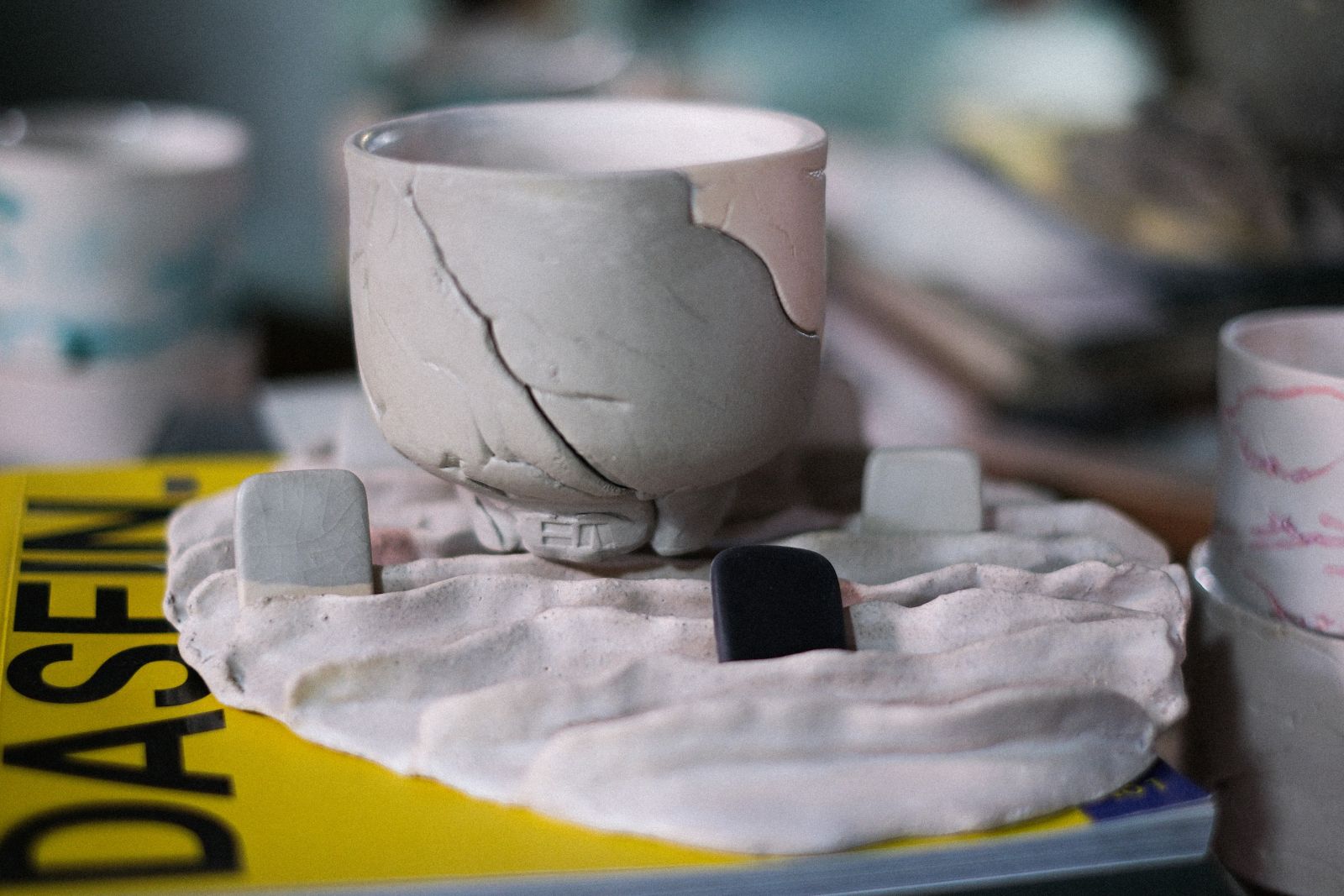
LD: How do you approach new ideas? Do you think in a wider conceptual collection or does it expand piece by piece?
SA: I tend to follow wherever my thoughts lead me – it's a bit spontaneous, to be honest. Recently, I've found myself less preoccupied with conceptualizing entire collections and more focused on individual pieces. That said, there are occasions when ideas for collections emerge, particularly for artworks. Sometimes, collections organically form around a single item, as I realize its potential for expansion and coherence when multiplied. However, I don't rigidly adhere to the notion of creating collections; rather, I let my creative process flow naturally.
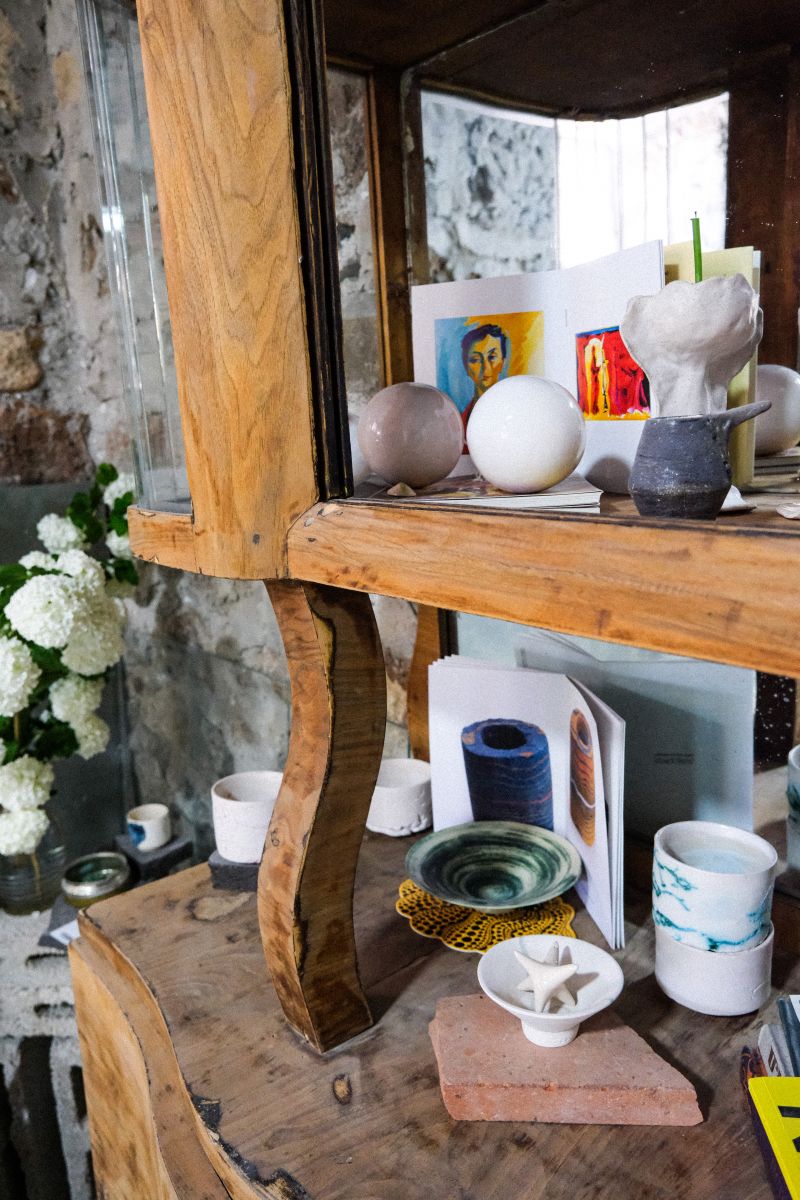
I did not want to neglect the peculiar candle holder, the curve of the ceramic meticulously shaped for the dripping wax droplets to avoid contact with surfaces. But then I noticed a book behind it, intentionally opened for view on two specific pages, “is your work influenced by any of the art displayed here?”, she reaches for the same book as she explains that Korean artist Jongjin Park held ceramic classes at TUMO Studios, “that is where my primary interest in ceramics stems from”. Originally a furniture and product designer, Svetlana’s experience with the ceramic master primed her curiosities towards expanding into the ceramic arts.
LD: Is there something in your work process and your approach to ceramic art that makes it unique?
SA: In my approach to ceramic art, I place significant emphasis on the process of creation itself. I find that the act of crafting holds a profound significance, almost sacred in nature. Rather than rigidly adhering to initial ideas, I embrace the journey of creation, allowing my hands to guide the final outcome. Drawing from my experience and repertoire of techniques, I trust in the tactile sensation of each piece to dictate its form. Before considering a piece complete, I invest time in physically engaging with it, ensuring its readiness and authenticity.
She then shows me the moon jar up close, describing the process of how the jar is originally two halves that eventually come together into a whole. “I will be attempting to make another one of these today”, she smiles. The idea of kintsugi immediately comes to my mind: “the Japanese art of repairing broken pottery by mending the areas of breakage with urushi lacquer dusted or mixed with powdered gold, silver, or platinum”. Her blue eyes light up with excitement, “I would love to learn kintsugi but I want to make sure I find the right master which is honestly rare to come by”. The more I observed the nooks and edges of the cabinet the more I saw it as a timeline reflecting the different eras of Svetlana’s ceramic journey.
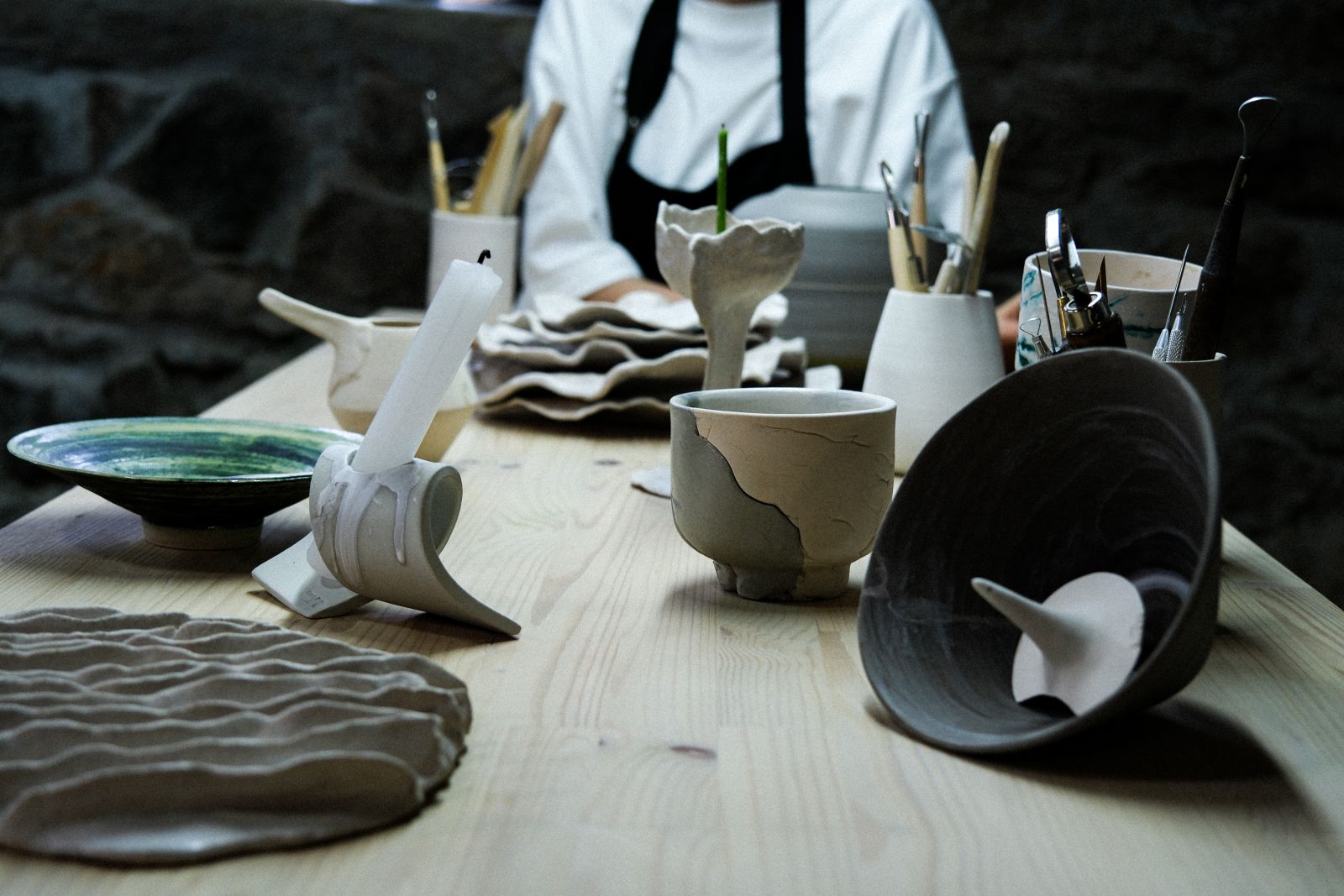
LD: How has your process evolved over time?
SA: It's been quite a journey. Starting as a furniture and product designer, I've always sought to create things of genuine value. I explored various techniques and crafts, eventually finding inspiration in manual labor-intensive methods. The seemingly repetitive tasks and the dedication I put into each piece bring me a sense of calm. Many have noted that my creations exude this tranquility, which I also feel during the creative process. Over time, I've transitioned towards embracing more experimental techniques and materials. This willingness to take risks has become foundational in my artistic endeavors, allowing me to push the boundaries of traditional craftsmanship and foster innovation in my work.
LD: Intermission question. What would you say are your top five favorite books of all time?
SA: Norwegian Wood by Haruki Murakami, Dance Dance Dance by Haruki Murakami, Master and Margarita by Mikhail Bulgakov, Plakha by Chingiz Aitmatov, and Poems by Marina Tsvetaeva.
LD: Since your involvement with Creative Armenia’s Artbox program, how has your career progressed? What has changed in your approach to art and your creative process?
SA: My involvement with Artbox workshops brought about a significant realization: alongside creating products, I needed to incorporate services. Since then, I've endeavored to adopt a more structured approach to managing the studio, albeit with varying degrees of success. Over the past year, I've introduced additional services and established collaborations with several stores, witnessing a growth in the studio's dedicated followers.
As the studio expands, so do my ideas, often outpacing my ability to implement them. I'm eagerly awaiting the right opportunity to scale up and expand the team. Ultimately, my goal is to delegate the production process, allowing me more time to focus on creating artwork and participating in exhibitions and competitions. With a surplus of ideas already in store, I'm eager for what the future holds.
We continue to walk around the small space, next to the wooden cabinet is a display composed of a beautiful piece of driftwood paired with a vase full of flowers on top of concrete blocks. I started to notice a recurrence in the overall aesthetic, delicate details, and elements one would find in the natural world against the rigid roughness found in the foundations of modern structures. This holds true to the studio walls as well, intentionally exposed brick with minimal dimly lit chandeliers hanging throughout. I asked where she acquired the chandeliers and why she placed them specifically in her studio, “I stumbled upon an old apartment that was going through remodeling and these two chandeliers were sitting there. Since the owners did not want them, I refurbished them here. I am always trying to find ways to bring in elements from the past. We’ve had guests come over for our workshops who have found familiarity in these vintage lights and it gave them a wave of nostalgia. It's always interesting how there can even be unexpected connections with people through threads from the past like having one of your loved ones recognize your newer friend because they photographed their grandmother back then. When you find out about these details you’re amazed at how through all this time those connections are still upheld and brought up”. It's lovely to see how the parallels from the past and present are not only evoked through Svetlana’s decorations in the studio, but also by the interactions she observes with the people who come to visit.
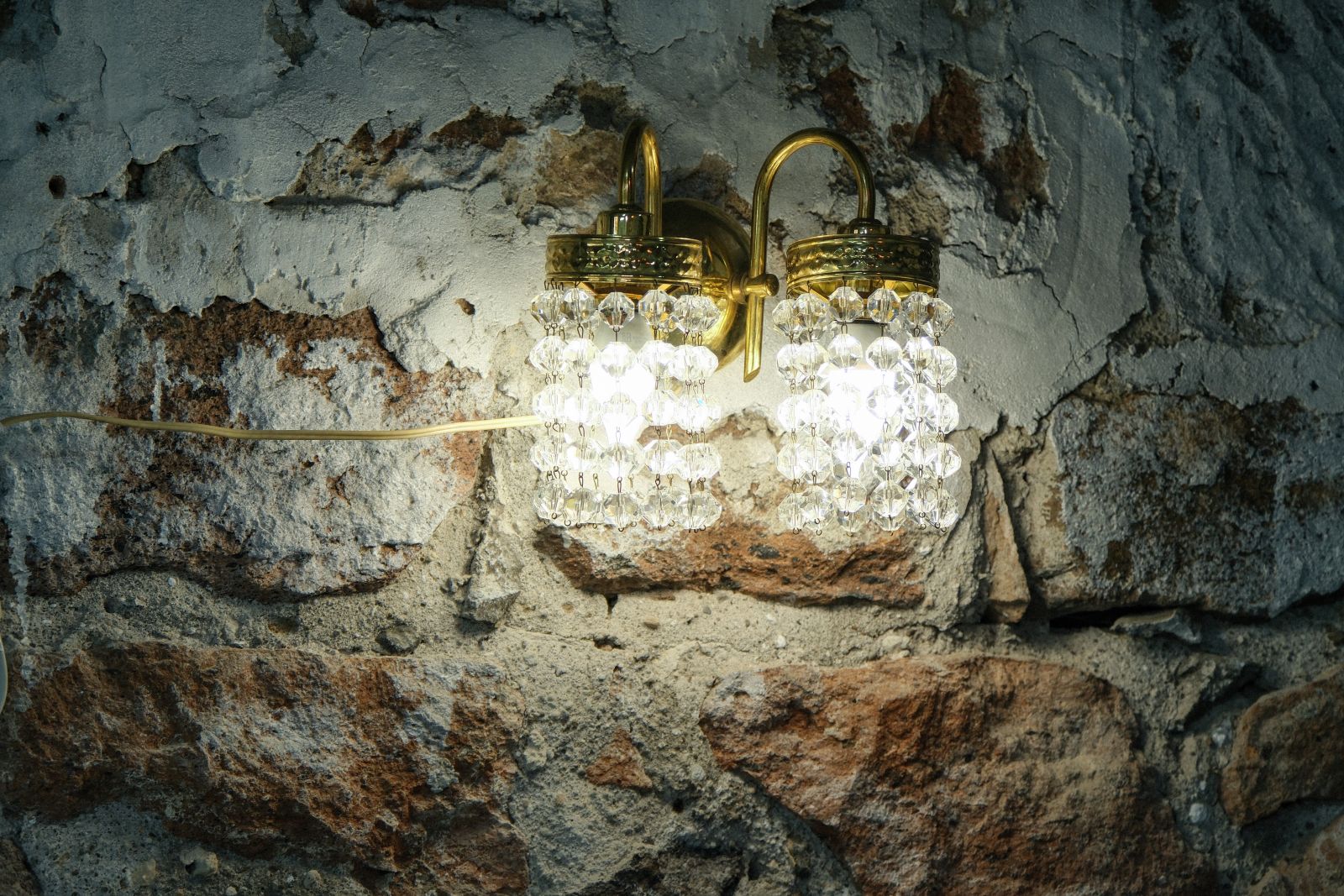
LD: When did the idea for your studio to be in your home, open to the public, come to fruition, and how has it been running so far?
SA: It was when I started receiving orders and needed a dedicated workspace. Rather than embarking on an extensive search, I repurposed the basement of our house, which was previously used for storage.
Our home has always been a gathering place for friends, including those from different parts of the world, who often remark on its serene atmosphere. Observing how much people enjoy the tranquility of our home, it struck me that I could leverage this advantage to create a space where others could not only attend ceramics workshops but also unwind and recharge.
For me, these workshops are more than just about pottery; they offer an opportunity for people to relax amidst our peaceful garden, serenaded by birdsong and surrounded by fresh air. It's a chance to momentarily escape the hustle and bustle of daily life and find solace in creativity and nature.
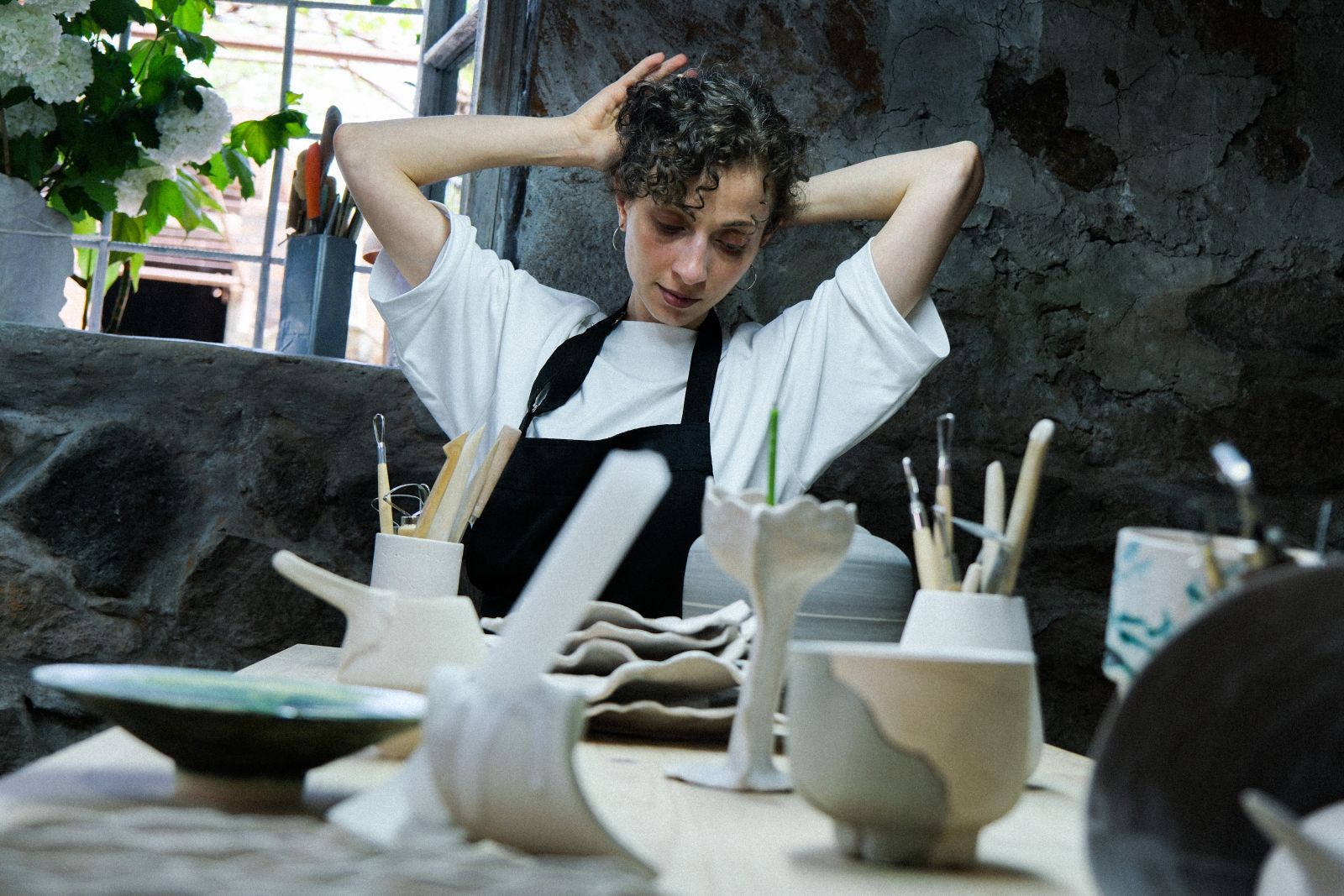
As we walk to the pottery wheel, we pass by a couple of shelves that are nailed onto the wall. The first half of the shelves contain Svetlana’s work and the second half is the work guests have created. It’s clear that some of it was made by children; there's an endearing sense of clumsiness to them – bubbly flowers with electric pops of blue. I asked her to talk about the most memorable interaction she’s had with one of the guests, “One day, a 3-year-old kid came to visit with his parents, who were very memorable because of how curious and active he was. He wanted to touch and explore everything including the homemade food that we always serve during our workshops. As we were eating outside, he started pouring sugar into a roll of lavash and then attempted to eat it. The sugar started trickling down from the other end but at that point it was hard for his parents to do anything.” She pauses to giggle as she further recalls the memory. “When he got to the last bit of lavash that was sugar-free, he exclaimed in disappointment, ‘How am I going to eat this piece without any sugar?’ He continued his curiosities inside the studio with the clay, attempting to melt it in a bowl of water with the ceramic tools we have on each table. It felt like he was more interested in being here so that he could test out what he could do with what he was provided with. He was a stand-out guest for sure”.
LD: What do you hope is the outcome of having visitors in your studio? What feeling do you want them to leave with?
SA: I hope visitors leave my studio feeling safe and calm, with a sense of peace and serenity. My aim is for them to relax and carry that feeling with them long after they've left.
We are now standing by the pottery wheel, the shared origin story for all the art that surrounds us, “I am going to try to make another moon jar”, she smiles as she walks back holding a big slab of clay. Svetlana starts to mold the clay by rolling it and hitting it against her table. The tables shutter into a collective heartbeat as she repeats the process over and over. Once she is satisfied with the clay’s softened texture, she comes back to the pottery wheel. Svetlana puts on her apron, completing her full alignment with her studio.
LD: Is there anything you feel has not been done with ceramic art yet that you want to tackle? How would you like to expand the frontiers of the field?
SA: I'm particularly drawn to the idea of integrating multiple materials within ceramic art. I find it intriguing to blend various techniques and textures to create unique pieces. Currently, I'm deeply engaged in experimenting with the fusion of clay and different varieties of Armenian tuff stone. This exploration allows me to push the boundaries of traditional ceramic art by incorporating diverse materials, fostering innovation, and enriching the artistic domain.
The bird song is still prevalent in the background, with the addition of a rooster who is determined to make its presence known. I am put into a trance as I watch her start to spin the moon jar into its shape. She explains how she no longer approaches the process with a set design in mind, having learned the hard way that clay usually has a mind of its own. Though you can try to forcefully bring it back to the ideal form you had initially imagined, the clay will resist and you have to accept what it decides to be. There is a beauty in this unpredictability for sure, I found that Svetlana’s work highlighted this sentiment because of its sense of organicness. This was not only because of the earthy tones of the pottery but also because of the natural cracks in her pots and cups, the unevenness of the plates, and the slopes in the curves that showed us that she had molded them with her hands. It brought me back to her comments about time, watching how her process was full of patience with the clay and its delicate imperfections and potential setbacks, fundamental to each piece’s personality.
LD: Since your involvement with Creative Armenia’s Artbox program, how has your career progressed? What has changed in your approach to art and your creative process?
SA: My involvement with Artbox workshops brought about a significant realization: alongside creating products, I needed to incorporate services. Since then, I've endeavored to adopt a more structured approach to managing the studio, albeit with varying degrees of success. Over the past year, I've introduced additional services and established collaborations with several stores, witnessing a growth in the studio's dedicated followers.
You can keep up to date with Amatuni Studios on Instagram and Facebook.
Join our community and receive regular updates!
Join now!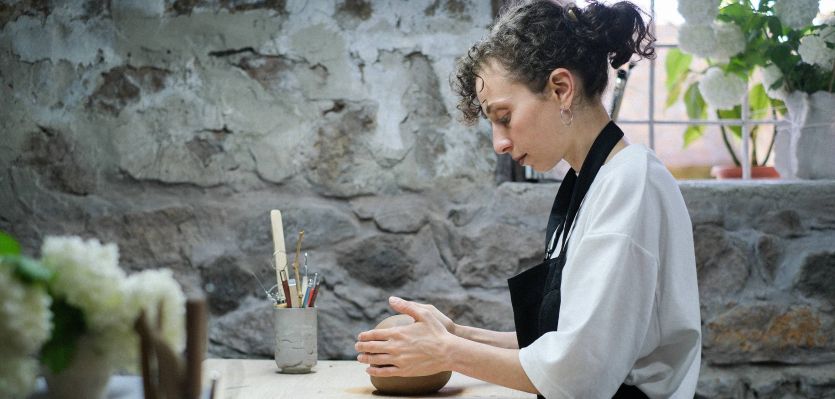






















Attention!